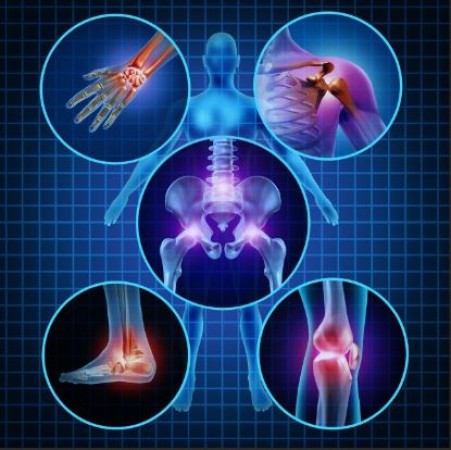Arthritis is a broad term encompassing various inflammatory joint conditions. It affects millions worldwide, causing pain, stiffness, and reduced mobility. Let's delve into the diverse types of arthritis and their distinctive symptoms.
Understanding the Types of Arthritis
1. Osteoarthritis (OA)
- Symptoms: OA primarily targets the joints, causing pain, swelling, and stiffness. It's common in weight-bearing joints like knees and hips.
2. Rheumatoid Arthritis (RA)
- Symptoms: RA is an autoimmune disease, leading to joint pain, morning stiffness, and fatigue. It often affects multiple joints symmetrically.
3. Psoriatic Arthritis
- Symptoms: Psoriatic arthritis combines joint pain with psoriasis skin lesions, affecting joints, nails, and skin.
4. Ankylosing Spondylitis
- Symptoms: This inflammatory arthritis impacts the spine and sacroiliac joints, causing back pain, stiffness, and limited spinal mobility.
5. Gout
- Symptoms: Gout is notorious for sudden, severe joint pain, commonly affecting the big toe. It's linked to elevated uric acid levels.
6. Juvenile Idiopathic Arthritis (JIA)
- Symptoms: JIA refers to arthritis in children under 16. Symptoms vary but often include joint pain, swelling, and fever.
7. Systemic Lupus Erythematosus (SLE)
- Symptoms: SLE is a systemic autoimmune disease, causing joint pain, skin rashes, and fatigue. It can affect multiple organs.
8. Sjögren's Syndrome
- Symptoms: Sjögren's syndrome targets moisture-producing glands, leading to dry eyes and mouth, joint pain, and fatigue.
9. Osteoporosis
- Symptoms: Osteoporosis weakens bones, increasing the risk of fractures. It's not a traditional arthritis but affects joint health.
The Role of Physiotherapy in Arthritis Management
1. Pain Management
- Physiotherapy employs various techniques to alleviate arthritis pain, including heat therapy, TENS (transcutaneous electrical nerve stimulation), and manual therapy.
2. Improved Mobility
- Through targeted exercises, physiotherapists enhance joint flexibility, making it easier for arthritis patients to move comfortably.
3. Strengthening Muscles
- Strong muscles can support weakened joints, reducing the risk of injury. Physiotherapists design exercise routines to strengthen the muscles around affected joints.
4. Joint Protection Strategies
- Physiotherapists educate patients on joint protection techniques to minimize stress on arthritic joints during daily activities.
5. Assistive Devices
- In some cases, physiotherapists recommend assistive devices like braces or splints to support affected joints.
The Power of Physiotherapy: A Personalized Approach
- Physiotherapy isn't one-size-fits-all. Each patient receives a tailored treatment plan, considering their arthritis type, symptoms, and overall health.
Arthritis, with its myriad forms and symptoms, can be challenging. However, with the right approach, including physiotherapy, individuals can effectively manage their condition, regain mobility, and enjoy a better quality of life.
This breakfast habit can make you a heart patient
Is the milk coming to your house real or fake? You can find out in these ways
Eating These Foods Daily Can Help Maintain Healthy Cholesterol Levels
